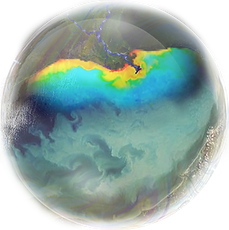

Built on Climate Change Science
Lost City of Mer is built on science in order to educate and activate the general public about the threat climate change poses to the health of our oceans.
Coral reefs support a quarter of all marine species and are one of the most important ecosystems on earth. It is estimated that by 2050 most of them will be gone if there is not large scale action to stop carbon emissions. Human scientists at Harvard University, Dartmouth College, the University of Arizona and the Flatiron Institute serve as advisors to Mer.
Science Bubbles



Your Mer scientist mom left clues in bubble messages for you about why the Mer civilization collapsed, and what actions to take to bring it back to life.
Coming Soon in Chapter Two
For example, this bubble explains the carbon cycle and what you can do about it in the human realm when you are on land.




Coral Planting has shown to be a viable method for restoring some dying reefs.
Design your own coral garden, and watch as it revives the ecosystem with exotic sea creatures.
Photo Credit: Smithsonian
Pollution
Polluted water pours into The Secret Coral Garden, the only place in Mer that is still alive. Can you stop the pollution and save the reef?
A science bubble reveals that industrial agriculture is pouring reactive nitrogen and phosphorous into the oceans through rivers, creating “ocean dead zones”. We have the ability to rectify coastal pollution by changing farming practices.

The Secret Coral Garden

Carbon Dioxide Meter


The CO and water temperature meter responds to the player's real world actions to lower their carbon
footprint as a form of gameplay and informs players about the impact of carbon on the ocean.










